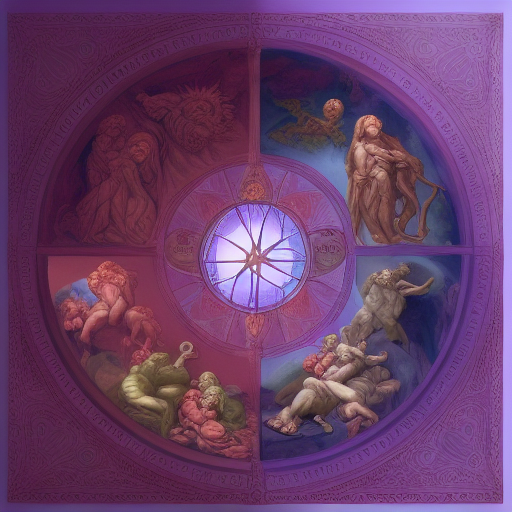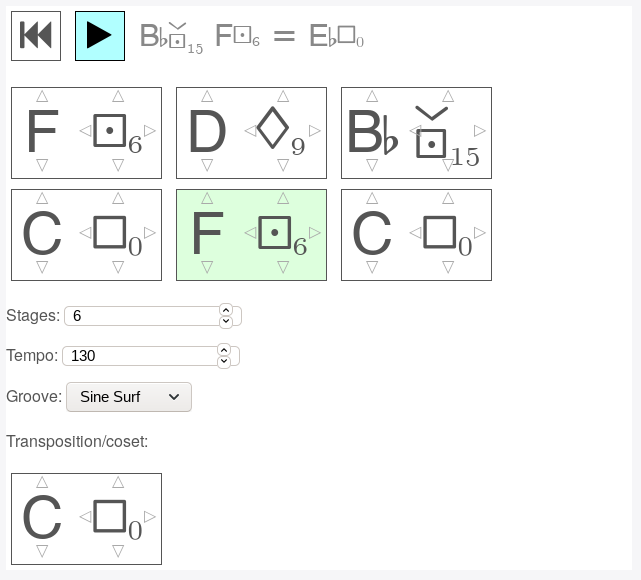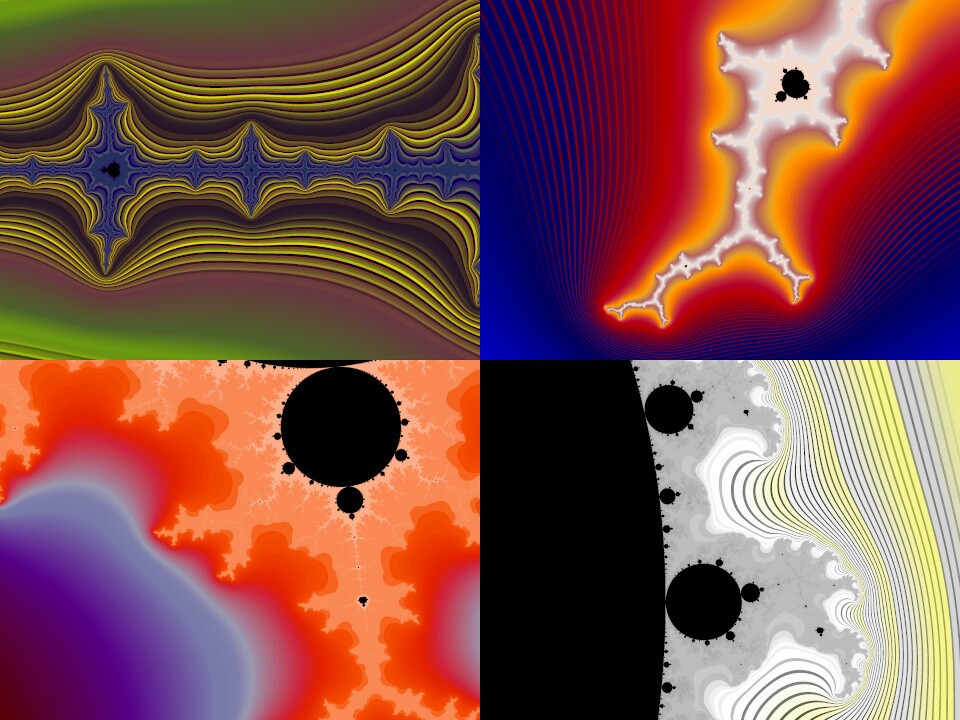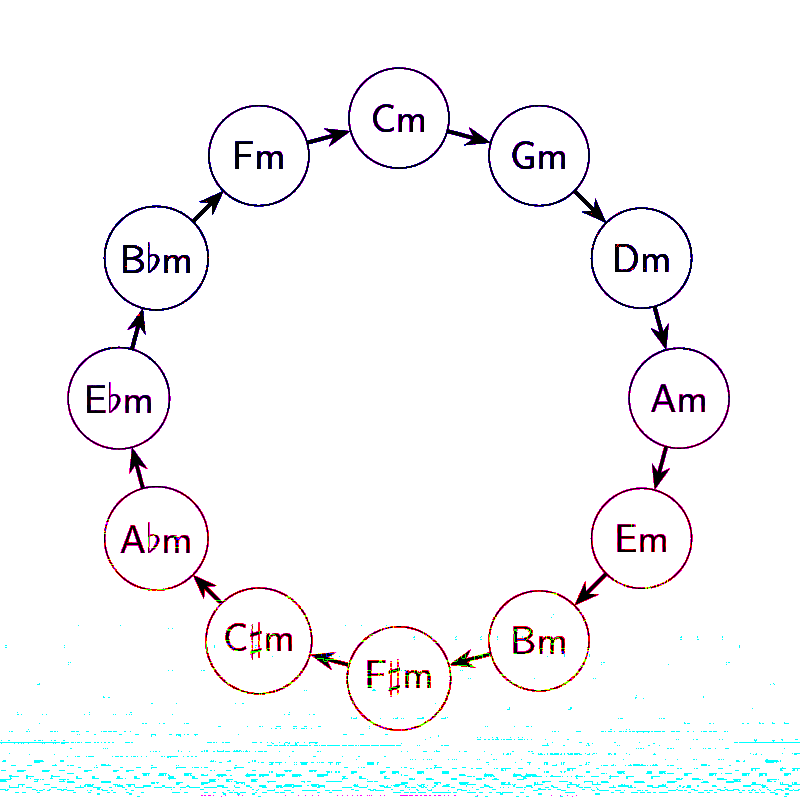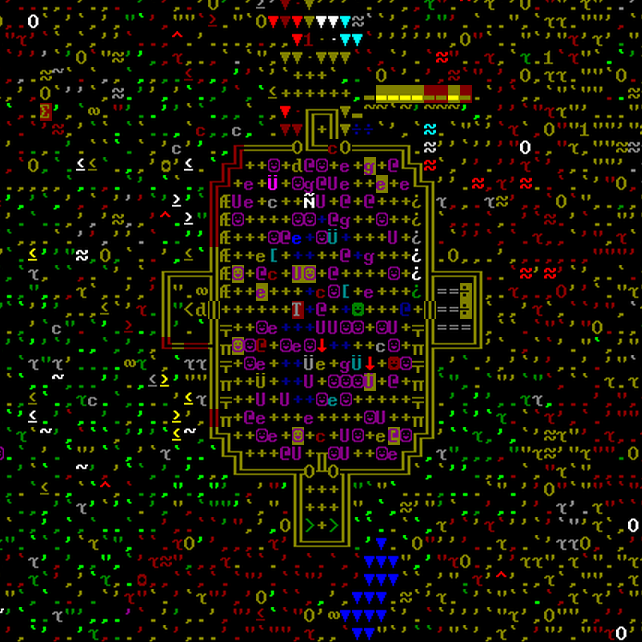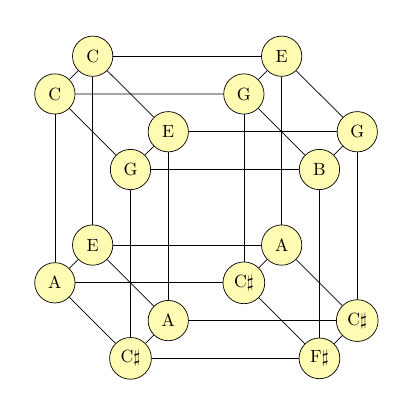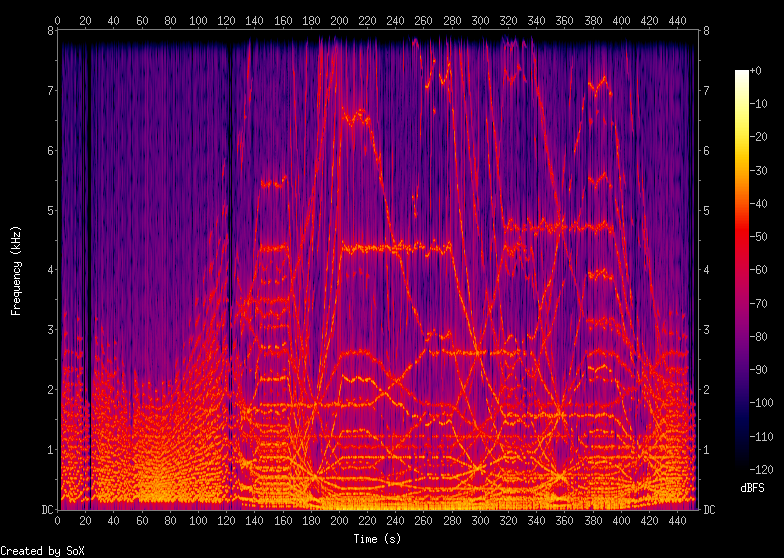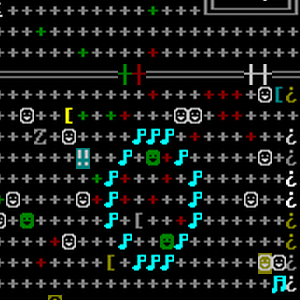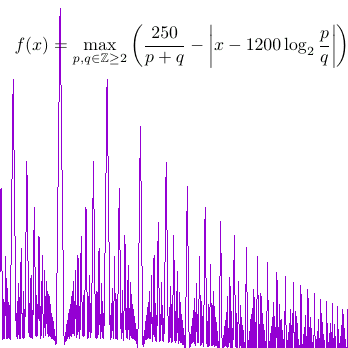tag "composition"
Carmilla
I posted my latest composition project on the audio server a few days ago. It's called the Carmilla suite, and it's a neo-Baroque piece for piano four hands. READ MORE
Dispensations
The MSK 015 Quad VCA is an important milestone for North Coast Synthesis because it's the last missing piece for building a complete synthesizer: with this module and the rest of the North Coast line, it's possible to make music without needing any modules from other manufacturers. Partly to celebrate the release, and partly because I needed some better audio demos to post in the storefront, I spent most of June writing and recording music with my own modules. READ MORE
A fractal sequencer toy
Here's a fractal chord sequencer you can play right in your browser. READ MORE
Aconcagua
Every so often I come back to the idea of generating self-similar or "fractal" chord progressions by recursively applying grammar rules, as in my 2015 composition Dharmapala. I like the general method described in that article, but one thing I don't like so much about the finished piece is that it sounds the same all the way through. There's a little bit of "development" or shift in texture over the course of the piece, largely driven just by my performance-time changes to the synthesizer settings and the fact that I allow the notes to be chosen from a wider range toward the end. READ MORE
Listening longer to the Mandelbrot Set
I've long been interested in ways to sonify fractals, and I wrote an article here about Listening to the Mandelbrot Set in 2017. At that time, I was thinking of it as a way to generate a waveform: basically, imagine running a point along the (infinitely wiggly!) boundary of the set, making many complete circuits per second, and use the real and imaginary coordinates of the moving point as waveforms for synthesis. Then the entire Mandelbrot Set (often abbreviated to "M") defines a timbre that may be interesting, and which can be used as a musical building block. It's a little bit like putting a phongraph needle on the edge of the set and playing it like a record. READ MORE
Vexations
Erik Satie was a French composer who lived around the turn of the 20th Century and did a number of bizarre things, including the creation of a piece of music called Vexations which was not published during his lifetime but which has fascinated people subsequently. It's a single page of music, written with strange notation, containing an instruction that has been translated as "In order to play the theme 840 times in succession, it would be advisable to prepare oneself beforehand, and in the deepest silence, by serious immobilities." Although what that's really intended to mean is not clear, it's often interpreted as saying that the music on the page should be repeated 840 times, which makes a performance of the complete piece on the order of 24 hours long. READ MORE
Genome Jazz
The COVID-19 pandemic has made everybody interested in virology, and molecular biology more generally, and one of the cool things about living in the Future is that genome sequences have become accessible. Where it used to be the work of a person's entire career to maybe obtain just a fragment of the code for a single gene, now there are machines that can obtain a complete sequence for a sample in just hours or days. And unlike a lot of other scientific data, it's become the usual practice for gene sequences to be shared. Any ordinary person, not just a capital-S Scientist, can just go on the Web and download the sequences for genes. So here's one of my lockdown projects: using that public genome data for sonification. READ MORE
Ambient chord progressions
I get a lot of questions about ambient chord progressions. Actually, I don't get any questions about ambient chord progressions. What I get is search engine traffic from people who were looking for that on the Net, and end up reading my old article about fractal chord progressions, which may or may not be much help to them. READ MORE
More music of the dwarves
I've written before about the music of Dwarf Fortress - not just music to listen to while playing (which is the main thing you can find if you search the Web for this topic) but the music described in-game. The game simulates a procedurally-generated fantasy world full of different species of intelligent creatures (dwarves, elves, humans, etc.); game characters sometimes are described as playing music; and for each simulated culture, the game software generates a description of that culture's music. READ MORE
Walking the hypercube
Here is the skeleton of a four-dimensional hypercube, or tesseract, with the vertices labelled by musical note names. READ MORE
Alternate harmony with additive synthesis
Much of musical harmony comes down to combining notes that share harmonics. Sounds produced by (some...) physical objects typically have consistent waveforms, where each wave is the same shape as the last. That is also typical of modular-synth oscillators; and its consequence is that the spectrum always consists of a sum of sine waves all at integer multiples called harmonics of one frequency called the fundamental. The proportions and phases of the different harmonics determine the shape of the waves, and those can vary a lot, but the general pattern of integer multiples is fixed. If you play a note like D with a fundamental frequency of 293.7 Hz, it will have its harmonics at 293.7 Hz, 587.4 Hz, 881.1 Hz, 1174.8 Hz, 1468.5 Hz, 1762.2 Hz, and so on. READ MORE
The Music of the Dwarves
Orid Oru, "The Universes of Forever": a world not much different from many others, whose most notable feature is a huge inland ocean connected to the outer waters that surround the world only through a small channel in the northwest. The western dwarves of Goden Tarmid "The Rope of Blades" have long followed a complicated prophecy requiring them to send an adventurer around the world, circling the ocean. It was they who built the bridge of Merchantwinds across the strait, making possible, in theory at least, an entirely land-based passage around the world. So far, nobody has actually completed the journey, because there are many dangers along the way. READ MORE
Live-coding a permutation-based fugue
If you've been following North Coast for a long time, you may remember the live video streams I did back in 2016. This week I spent some time getting the software and hardware set up to do that again, which pretty much meant starting over from scratch because enough things have changed that my former config was no longer appropriate. You can read about the technical side over on my personal site. I'm still not sure exactly how I'll be using this capability, but it's something I've wanted for a long time as a way to raise the profile of some of the stuff I do. In the days to come I'll probably plan out some scheduled broadcasts on music, electronics, and other topics. READ MORE
Listening to the Mandelbrot set
Okay, it's New Year's Eve, I'm overdue to write this week's Web log entry, and the topic I wanted to write about is held up because of (among other things) a package that apparently was stolen from my front porch after it was "delivered" during my vacation and I told them not to mail it so early but blah blah blah... Instead of the exciting mystery topic, let's dig into the back catalog again and think about how to listen to the Mandelbrot set. READ MORE
Maximizing inharmonicity
As I've said before, I'm interested in slow ambient drones - sounds that smoothly change their texture over a period of time without any sharp boundaries or beats. If you have something like this playing in the background, I want for it to never grab your attention, but when you occasionally do focus on it, you notice something different each time. In my " Totally tubular" posting last month, I talked a bit about making inharmonic bell sounds using a hardware modular synth. This week I've been playing with additive synthesis in the Csound software modular. READ MORE

